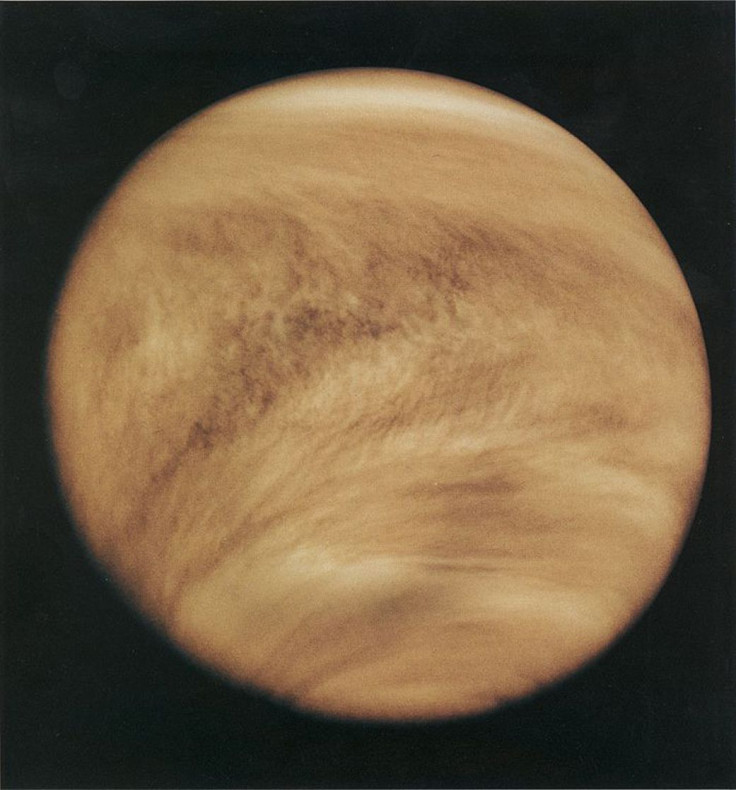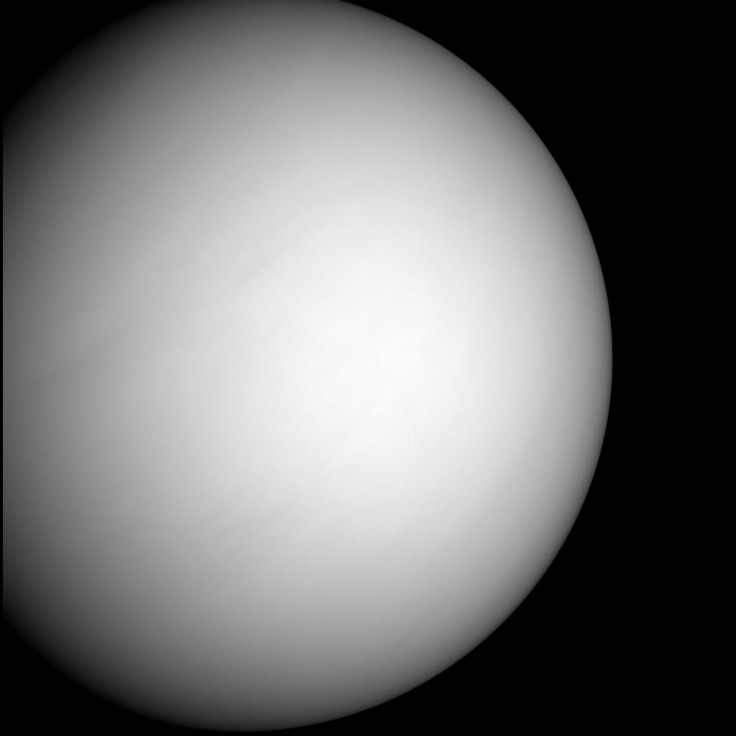NASA Mission To Venus Looks To Pierce Thick Atmosphere

NASA is on a mission to unlock the mysteries of the Venus atmosphere, sending a tiny satellite to Earth’s inward neighbor to investigate its clouds.
Scientists are trying to understand the how the atmosphere interacts with ultraviolet light because they have noticed a strange effect: According to NASA’s Goddard Space Flight Center, something in the cloud tops absorbs light in this spectrum. They can see this when they view Venus across different wavelengths.
“Venus looks bland and featureless in visible light, but change the filter to ultraviolet, and Earth’s twin suddenly looks like a different planet,” NASA said. “Dark and light areas stripe the sphere, indicating that something is absorbing ultraviolet wavelengths in the planet’s cloud tops.”
That’s compared to other wavelengths of light, which are scattered or reflected back into space by the clouds of sulfuric acid.
But the source of that ultraviolet effect is a mystery. The CubeSat UV Experiment, or CUVE for short, plans to send a small satellite full of miniature instruments, like an ultraviolet camera and a telescope that contains a special light-gathering mirror, to Venus to get more information about the atmosphere.
“Since the maximum absorption of solar energy by Venus occurs in the ultraviolet, determining the nature, concentration and distribution of the unknown absorber is fundamental,” CUVE Principal Investigator Valeria Cottini said in the statement. “This is a highly-focused mission — perfect for a CubeSat application.”

NASA has previously sent probes to Venus, but none investigated this specific atmospheric effect. The CUVE satellite would take a year and a half to get to Venus and then spend about six months gathering data.
The CubeSats are nanosatellites that are created for specialized tasks and designed to be unobtrusive: They are only about 4 inches across, weigh about 3 pounds and hitch rides on rockets during previously scheduled launches, with other primary missions, to get into space.
According to NASA, they have the added benefit of helping the space agency test out new technologies in instruments and communications.
Although Venus is relatively close to Earth, compared to the size of the entire solar system, there is still much we do not know about that planet. One thing we do know is that it is scorching hot. Its thick atmosphere is mostly comprised of carbon dioxide and that gas, plus sulfuric acid in its cloud, traps heat on Venus in a much more extreme version of the greenhouse effect that we see here on Earth.
NASA called it “the hottest planet in our solar system, with surface temperatures hot enough to melt lead.”
It also rotates in the opposite direction from Earth, so slowly that Venus goes around the sun faster than it completes a rotation — a year on that planet is shorter than a day.
It’s possible that Venus, which is about the same size as Earth, once held water, although it’s long gone now. Scientists running computer simulations recently explained that depending on the evolution of the cloud cover and the atmosphere there, it would have been possible for Venus to be at just the right temperature earlier in its life to support liquid water. The ocean on the surface would have been thin, but would have been possible if Venus once contained just a third of the water that Earth currently has.
NASA has previously probed the habitability of Venus, and has suggested it is possible that there was a period of about 2 billion years in which there was an ocean and cooler temperatures on the surface.

© Copyright IBTimes 2024. All rights reserved.




















